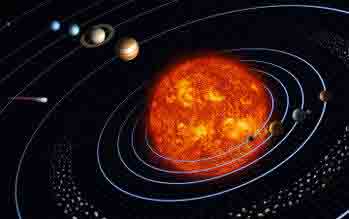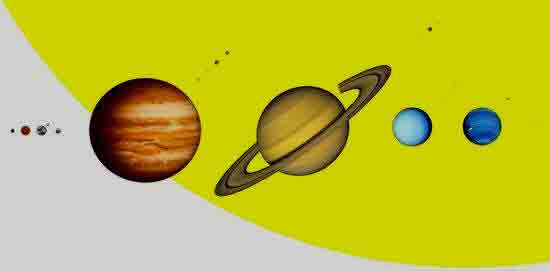|
> The Sun > Mercury > Venus > Earth > Mars > Jupiter > Saturn > Uranus > Neptune > Pluto > Comets
|
The solar system is the
retinue of objects gravitationally bound to our Sun. Traditionally, it is
said to consist of nine planets and their 156 (at last count) moons;
however a large number of other objects, including asteroids, meteoroids,
planetoids and comets orbit the Sun along with them. The current hypothesis of solar system formation is the nebular
hypothesis, first proposed in 1755 by Immanuel Kant. It states the solar
system was formed from a gaseous cloud called a solar nebula. It had a
diameter of 100AU and was 2-3 times the mass of the Sun. Over time, the
nebula collapsed after a super nova may have disturbed it. A super nova
occurs when a massive star ceases to generate fusion energy in its core,
and collapses inward under the force of its own gravity. This explosion
sends waves in space, which squeezes the cloud of gas and dust. This
initial disturbance allowed the gravitational forces to overcome the gas
pressure forces that were causing the nebula to expand and hence the
nebula began to collapse. As the nebula decreased in size as it collapsed,
it spun faster because angular momentum is conserved. And as the competing
forces associated with gravity, gas pressure, and rotation acted on it,
the contracting nebula began to flatten into a spinning pancake shape with
a bulge at the center.
|

